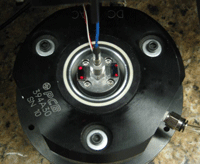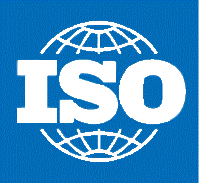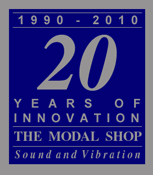 sensor &
calibration tips sensor &
calibration tips
|
Greetings,
|
Welcome
to issue #39-
Hope you had a great October and let me say, "Welcome back!" to
all our dynamic measurement professionals and industry
readers. My name is Michael Lally, and I'm part of the second
generation in the PCB Piezotronics sensor family. As part of
my role as President of The Modal Shop, A PCB Group company, my goal
is to bring you a quick dose of technology, tips and applications
each month to help you make better dynamic measurements. After
scanning this month's sensors and calibration articles, please don't
forget to check out our archive section on the left. Each
month, readers are sending me notes with "Wow! I didn't know there
was that much helpful information on your website!", so please give
it a look, pass it on and let me know what other topics you would
like to see covered in future
issues. | |
| Tip
of the Month |
Remember
that the shaker transverse recommendation in the ISO standard
16063-11 for Laser Primary Accelerometer Calibration is 1% to 10 Hz,
then 10% to 1 kHz and then 20% above. This requires special
air-bearing shaker selection and is even tighter than the 10% to 1
kHz and 30% above that is recommended in ISO 16063-21 Vibration
Calibration by comparison to a reference
transducer. |
| Quick Links |
ISO TC 108 -
Mechanical vibration, shock and condition
monitoring
ISO TC 108/SC
3 - Use and calibration of vibration and shock measuring
instruments
IMEKO
- Thailand (November 21-25)
SAVIAC
|
| Select
Newsletter Articles by Topic |
|
|
|
|
|
Accelerometers
and Dynamic Pressure Sensors for Extreme
Environments |
|
by Margie Mattingly, PCB
Piezotronics
As featured
in Test Magazine Oct/Nov 2010
 Accelerometers and pressure
sensors for measurement in extreme environments require special
consideration during design and manufacturing processes.
Specialized applications frequently require use of a single sensor
model, which must be capable of operating over significantly wider
temperature ranges - for example, -420 to +1200°F (-251 to +649°C)
as in Figure 1 - while providing high accuracy, stability, and
reliability. Typical applications for high-temperature
aerospace sensors include measurement on gas turbine engines both
in-flight and in test cells, as well as rocket motors and thruster
assemblies. The same sensors might be required to withstand
radiation and be used in monitoring vibration inside a nuclear power
plant or on a space vehicle, or the cryogenic conditions of liquid
propellants. Accelerometers and pressure
sensors for measurement in extreme environments require special
consideration during design and manufacturing processes.
Specialized applications frequently require use of a single sensor
model, which must be capable of operating over significantly wider
temperature ranges - for example, -420 to +1200°F (-251 to +649°C)
as in Figure 1 - while providing high accuracy, stability, and
reliability. Typical applications for high-temperature
aerospace sensors include measurement on gas turbine engines both
in-flight and in test cells, as well as rocket motors and thruster
assemblies. The same sensors might be required to withstand
radiation and be used in monitoring vibration inside a nuclear power
plant or on a space vehicle, or the cryogenic conditions of liquid
propellants.
Click here to
read more about Extreme Environments
http://www.modalshop.com/filelibrary/Sensors_for_extreme
environments_require_special_design_considerations.pdf |
|
Lowering
the Barriers to Primary Calibration of
Accelerometers |
 While the ever lowering of uncertainty is the
quixotic quest of the metrology industry, for certain laboratories
the lowest possible uncertainty is a must. Of
particular note are National Metrological Laboratories, Primary
Standards Laboratories (often serving branches of the Armed Services
or National Labs), Accelerometer Manufacturers (there are over 150
now) and Accelerometer Calibration System Manufacturers (where there
are still only just a few...). Each of these
organizations has a specialized metrology function in providing
primary calibrations for accelerometers that will be used in
precision accelerometer calibration systems as references or
transfer standards as called out in ISO 16063-21.
In these cases, the best measurement uncertainties are needed
because the reference, or transfer standard uncertainty, will be
directly adding to the overall measurement uncertainty of the
calibration system. This is critical since it is most often the
single largest contributor to the system
uncertainty. While the ever lowering of uncertainty is the
quixotic quest of the metrology industry, for certain laboratories
the lowest possible uncertainty is a must. Of
particular note are National Metrological Laboratories, Primary
Standards Laboratories (often serving branches of the Armed Services
or National Labs), Accelerometer Manufacturers (there are over 150
now) and Accelerometer Calibration System Manufacturers (where there
are still only just a few...). Each of these
organizations has a specialized metrology function in providing
primary calibrations for accelerometers that will be used in
precision accelerometer calibration systems as references or
transfer standards as called out in ISO 16063-21.
In these cases, the best measurement uncertainties are needed
because the reference, or transfer standard uncertainty, will be
directly adding to the overall measurement uncertainty of the
calibration system. This is critical since it is most often the
single largest contributor to the system
uncertainty.
http://www.modalshop.com/calibration.asp?P=Accelerometer_Calibration_System&ID=349 |
|
Blast
from the Past... |
 While most are familiar with the sweeping
implications of ISO 9000, many users are not aware of the level of
detail available in ISO 16063 specifically covering accelerometer
calibration. This month we'll cover a basic overview
of the framework of ISO 16063 governing Methods for the
Calibration of Vibration and Shock Transducers. While most are familiar with the sweeping
implications of ISO 9000, many users are not aware of the level of
detail available in ISO 16063 specifically covering accelerometer
calibration. This month we'll cover a basic overview
of the framework of ISO 16063 governing Methods for the
Calibration of Vibration and Shock Transducers.
http://www.modalshop.com/calibration.asp?ID=177 |
| |
As The
Modal Shop continues to celebrate our 20th Anniversary, we invite
you to visit our Facebook
page and become a fan or follow us on
Twitter. We've been adding both our tradeshow schedule and
information about recent events around The Modal Shop. Come
and see how we live some of our core values of "Total Customer
Satisfaction, Innovation and
Community"!
Sincerely, |
|
 Michael J. Lally A PCB Group Company
| |